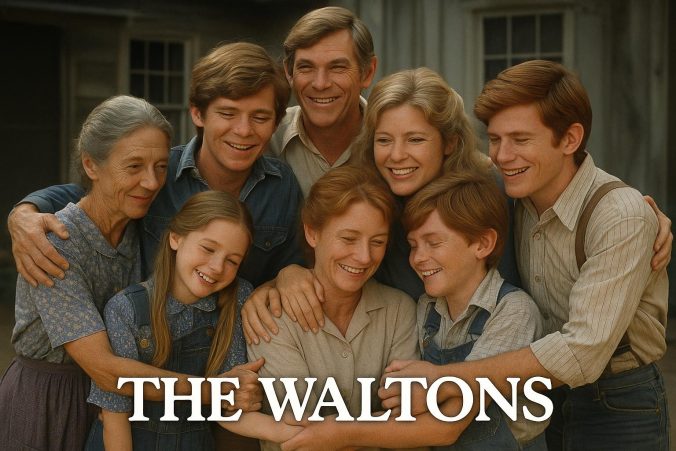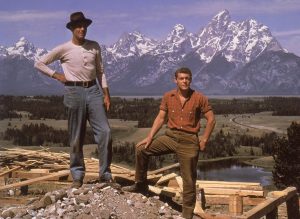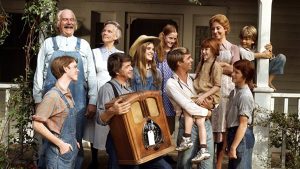The Friendships of The Waltons
The Waltons, an American television series that aired from 1972 to 1981, is well-regarded for its depiction of family dynamics and friendships. Set during the Great Depression and World War II, the series explores the relationships among the Walton family and their community in the fictional town of Walton’s Mountain. The friendships depicted in the series highlight themes of loyalty, support, and understanding.
Main Friendships
While the show primarily focuses on the Walton family, the friendships formed with and between other characters create a rich narrative tapestry. For instance, John-Boy Walton’s relationships extend beyond family ties, encompassing friends who play integral roles in his life. An example of this is his friendship with Sarah Simmonds. Their relationship is characterized by mutual respect and shared intellectual interests, providing John-Boy with a broader perspective on life away from Walton’s Mountain. As John-Boy navigates the challenges of young adulthood, Sarah serves as a confidante and adviser, often engaging in discussions that spark his imagination and fuel his ambitions as a writer.
This friendship with Sarah also underscores the series’ recurring theme of personal growth through the influence of others. John-Boy’s aspirations to become a writer are nurtured through his ongoing interactions with Sarah, prompting him to seek new experiences and perspectives beyond the confines of his rural upbringing. The dialogue and shared moments between them reveal the nuances of intellectual companionship, illustrating how friends can serve as both mirrors and windows to one’s potential worldviews.
Community Bonds
The Waltons emphasize community bonds that form the foundation of the characters’ support systems. The frequent gatherings at the Walton home or Ike Godsey’s general store underscore a sense of community. These settings are where many friendships are formed and solidified. For example, the Walton children often mix with local children, creating friendships that mirror the complexities of childhood experiences during the era.
These interactions highlight the intertwined lives of the community members, who share not only geographical proximity but also emotional connections born out of common challenges and shared joys. Through the backdrop of the Great Depression, the series paints a vivid picture of how communities relied heavily on interpersonal relationships to navigate both economic hardships and personal trials.
One of the show’s strengths is its ability to depict the subtleties of community interaction—demonstrating how the act of coming together for barn raisings, celebrations, or even small conversational exchanges in the general store, serves as an expression of unity and collective resilience. The friendships formed in such communal settings often transcend age or social status, emphasizing an egalitarian culture crucial for the well-being of Walton’s Mountain inhabitants.
Intergenerational Friendships
Another key aspect of the friendships depicted in The Waltons is the intergenerational connection. Characters such as Zebulon Walton (Grandpa) establish relationships with younger characters, which serve as channels for imparting wisdom and tradition. Grandpa’s friendship with Yancy Tucker is noteworthy as it provides comedic relief, contrasting with the more serious themes of the show. Their interactions exemplify a lighthearted yet deeply trusting friendship.
Intergenerational friendships offer a dual purpose: passing down cultural and familial narratives and providing younger characters with guidance from elders who have accumulated a lifetime of experience. Grandpa Zeb’s myriad tales and lessons serve as both entertainment and education for the youthful characters, anchoring them in the values and ways of life that define Walton’s Mountain.
Moreover, the series brilliantly navigates these friendships to exhibit both continuity and change. By bridging generational gaps, The Waltons bring to light the transformative power of mentorship and the joy found in shared intergenerational activities, from fishing to storytelling. These relationships also highlight how elders gain new perspectives by interacting with the youth, making these friendships reciprocally enriching.
Friendships with Outsiders
The series also portrays friendships that develop with outsiders who come to Walton’s Mountain. These relationships often introduce new ideas and challenges, prompting the characters to reconsider their perspectives. Episodes featuring guest characters, such as itinerant workers or soldiers, illustrate the Waltons’ openness and hospitality, leading to temporary yet impactful friendships. These interactions are pivotal in expanding the narrative beyond the immediate environment.
In encountering outsiders, the Walton family and their community display a willingness to engage with different experiences and viewpoints, thus expanding their understanding of the world around them. These transient relationships serve as catalysts for personal transformation and reflection among the established characters. For example, friendships with travelers or visiting professionals can introduce broader themes such as education, war, or technological advancements, sparking conversations that broaden the horizons of Walton’s Mountain residents.
Furthermore, these outsider friendships nurture an environment of acceptance, demonstrating the Waltons’ commitment to inclusivity and mutual respect. The stories and lessons imparted by these guests also leave indelible marks on the community, influencing individuals long after the guests have departed.
For further information about the dynamics and history of these friendships, consider exploring dedicated fan sites or IMDb for additional insights and episode details.
Overall, The Waltons uses its focus on friendships—be they familial, communal, intergenerational, or with outsiders—as a lens through which it explores and celebrates the complex human experience. Through honest and poignant portrayals, the series offers a timeless reflection on how relationships define our identities, enrich our lives, and sustain our communities even amid adversity.


